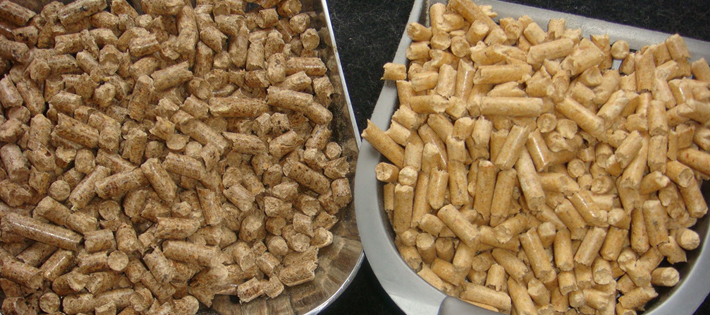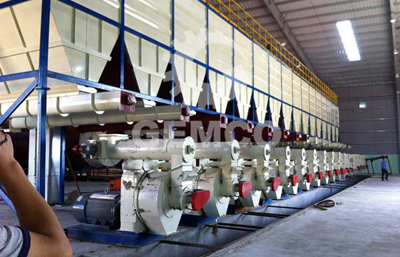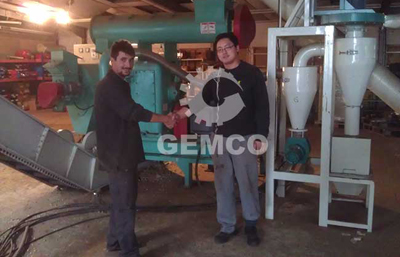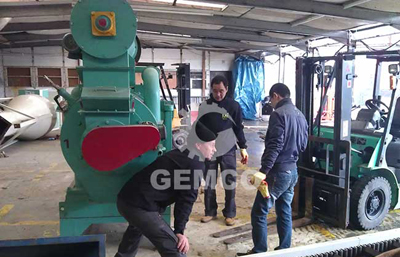Comparison Between Hardwood Pellet and Softwood Pellet
Traditionally speaking, hardwood pellet has been preferred in wood stoves and fireplaces because it naturally has lower moisture content and higher density, and it burns longer. Softwood pellet is known for burning hotter initially, easy to light, having more pitch or sap, more sparks and sound as it burns, but burns up more quickly. Though hardwood has higher density than softwood, this difference decreases in the process of making wood pellets.

Moreover, there is also the voice that it doesn’t matter if the wood or sawdust for making pellets comes from a softwood species, hardwood species, or a blend, because they are all compressed to the same density. I can’t agree with this more. I also believe that whether a wood pellet is made of hardwood sawdust or softwood sawdust will have no bearing or influence over the quality of that specific wood pellet. What really matters is how clean the raw materials are that make up that pellet and how low the moisture content is- that’s this big difference!
Of course there are still some differences in price, heating and ash content, etc. The following is the comparison between hardwood pellet and softwood pellet in these aspects:
- Price: Hardwood pellet is usually sold as premium wood pellet. Making hardwood pellet needs higher investment cost because it has more demands for pellet mills and other relative equipment. What’s more, hardwood itself is more expensive than softwood as the raw material for making pellets. Therefore, the higher price of hardwood pellet has little thing to do with pellet’s quality. The wood pellets manufacturer has no choice but to increase hardwood pellet’s price to guarantee benefit.
- Heating: Softwood pellet produces from 10% to 20% BTUs when burning, which means that softwood pellet has a little higher heating value. This is mainly because softwood has more special sap than hardwood. Thus softwood pellet burns more quickly than softwood pellet.
- Ash content: The owners of fireplaces or pellet stoves always concerns cleaning demand and environmental influence. According to the research that compares ash content of hardwood pellet and softwood pellet, the hardwood pellet’s ash content is 3 times as that of softwood pellet. Although the ash content of premium wood pellet is less than 1%, the difference can be significant based on a whole long winter that needs heating.
- Other differences: In 2009, a research tested the combustion rate, dust emission and dust emission factors of hardwood pellet and softwood pellet in order to find their difference. Based on the research, their combustion values are nearly the same, while the dust emission and dust emission factors differ greatly. When the burning rate is low, softwood pellet’s dust emission and dust emission factors are much more than that of hardwood pellet. However, with high combustion rate, hardwood pellet releases much more dust per hour.
Hardwood Pellet & Softwood Pellet, Which One to Choose?
Many people concluded that “we have always burned hardwood in our wood stove so it must be better”. This is not true with pellets. People buy pellets by weight not volume. A cord of dry hardwood vs. dry softwood weighs about 2-3 times as much. However, a pound of dry hardwood weighs the same as a pound of dry softwood. Many retailers call their hardwood pellets “premium pellets” and charge accordingly.
You can also make wood pellets at home for your own use. It doesn’t matter whether it is hardwood pellet or softwood pellet, as long as the raw wooden material is clean and contains proper moisture. With a small wood pellet mill, you can DIY wood pellets with blended hardwood and softwood, as well as they burn completely in your stove. By making wood pellets as fuel or energy for individual usage, we can make full use of agricultural waste and other biomass resources. Besides, it’s also economical and save money for heating or cooking.
We receive enquiries in English, Español (Spanish), Русский язык (Russian), Français (French) and العربية (Arabic). Our professional team will reply to you within one business day. Please feel free to contact us!




